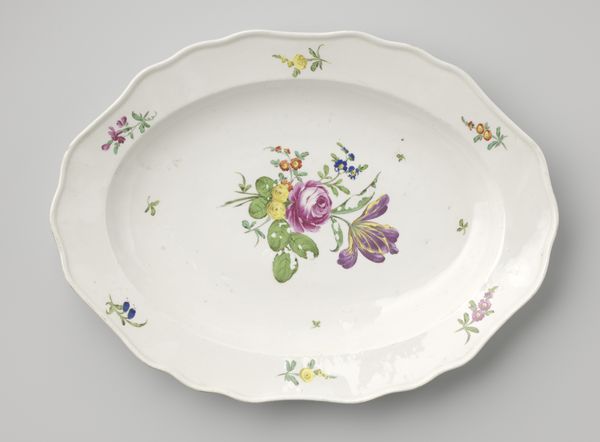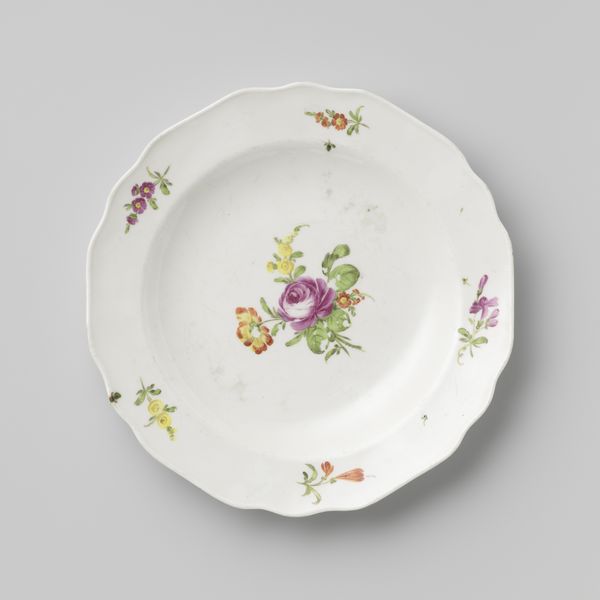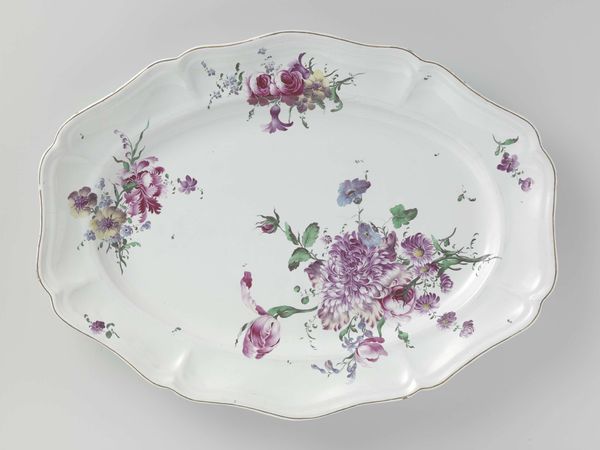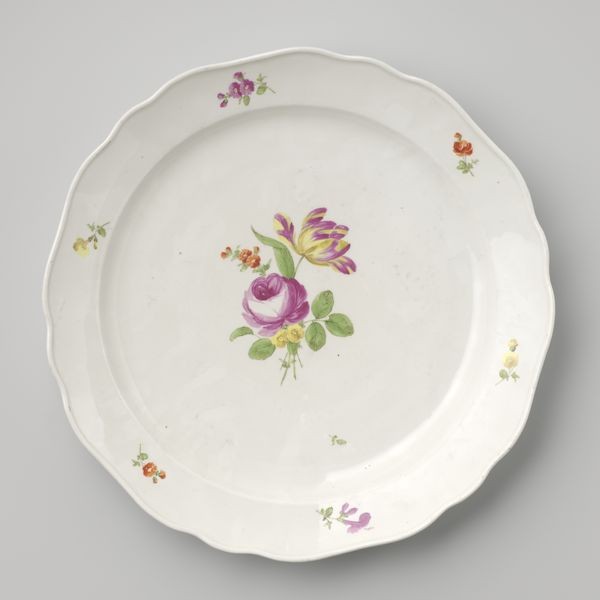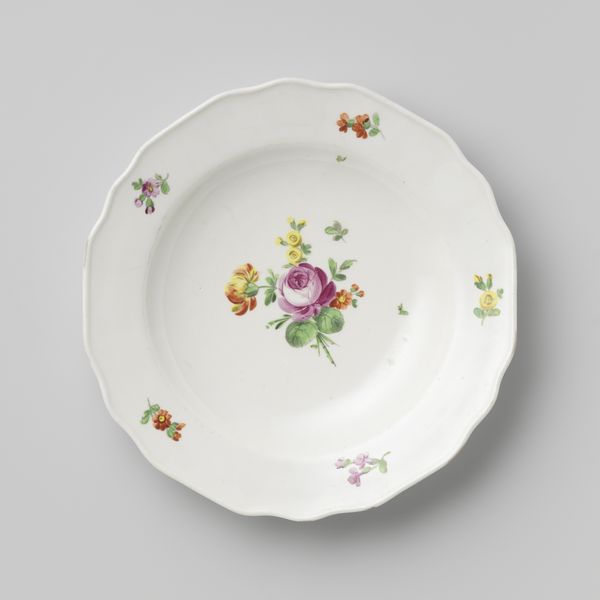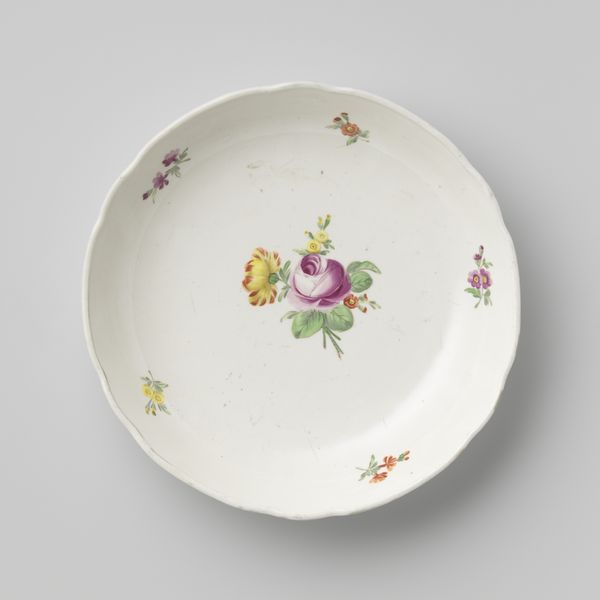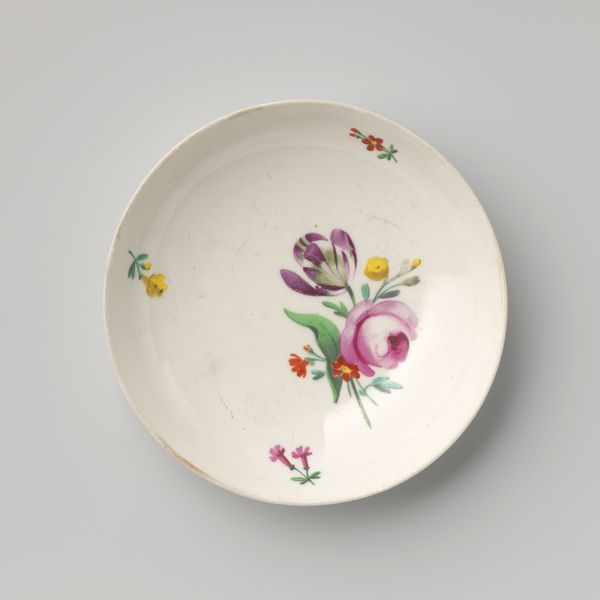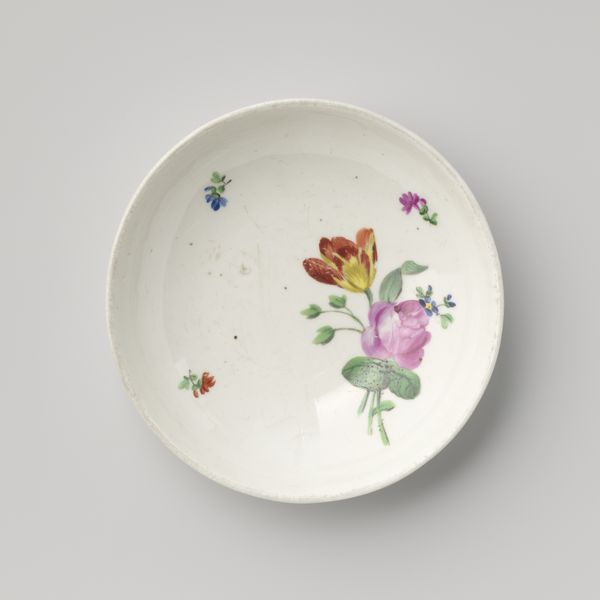
Onderschotel van terrine met deksel, veelkleurig beschilderd met bloemboeketten 1760 - 1770
0:00
0:00
painting, ceramic
#
painting
#
ceramic
#
decorative-art
#
rococo
Dimensions: width 39 cm, depth 32 , height 4 cm
Copyright: Rijks Museum: Open Domain
Curator: Looking at this piece, titled "Onderschotel van terrine met deksel, veelkleurig beschilderd met bloemboeketten," we see a delightful ceramic plate from the period of 1760 to 1770. The decorative style indicates it was likely crafted during the Rococo period. Editor: Oh, it’s quite charming! I immediately notice how the scattered floral designs dance across the stark white background of the plate. It exudes a sense of refined, airy elegance. Curator: Indeed. This piece resides here at the Rijksmuseum, a silent witness to centuries of evolving culinary aesthetics and social practices around dining. These terrines and their stands held particular importance, especially within the wealthy households. Editor: I find it so intriguing how these floral motifs are used. Notice how roses, cornflowers, and other blooms, each with its own traditional meaning are carefully depicted on its surface? The plate isn’t just functional; it is an emblem of nature's bounty and of love and delicacy. Curator: Absolutely! These flower arrangements aren't arbitrary, reflecting botanical interests blossoming during the period along with global trade and exchange. This piece of earthenware offered an easily accessible canvas to engage new audiences who could display taste through domestic decoration. Editor: There's a psychological impact here too, wouldn’t you say? A connection with simpler times. When we use dishes such as these, they become more than dinnerware; rather objects charged with narrative possibility and the spirit of that period's cultural rituals. Curator: That's an insightful observation, a physical embodiment of nostalgic longings and performative consumption. These works give art historians access into otherwise obscured realms of cultural value beyond painting on walls or statues on plinths, wouldn't you agree? Editor: I concur. Pondering the journey these floral emblems took to find expression on this ceramic plate is intriguing, highlighting how enduring these symbolic representations of floral motifs truly are. Curator: Indeed, thinking about the history of decorative arts is an inspiring journey; viewing design and material culture adds depth when attempting a grand vision of society across temporal landscapes. Editor: I quite agree. The convergence of cultural symbols across various media is truly insightful for an iconographer as well. Thank you.
Comments
No comments
Be the first to comment and join the conversation on the ultimate creative platform.
